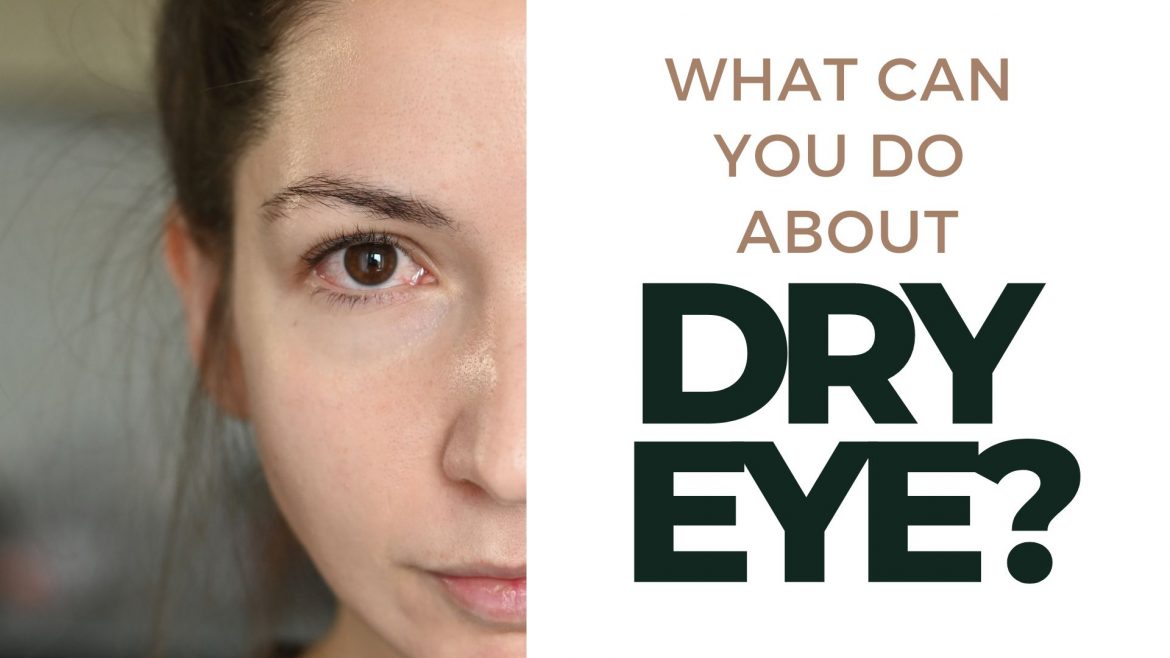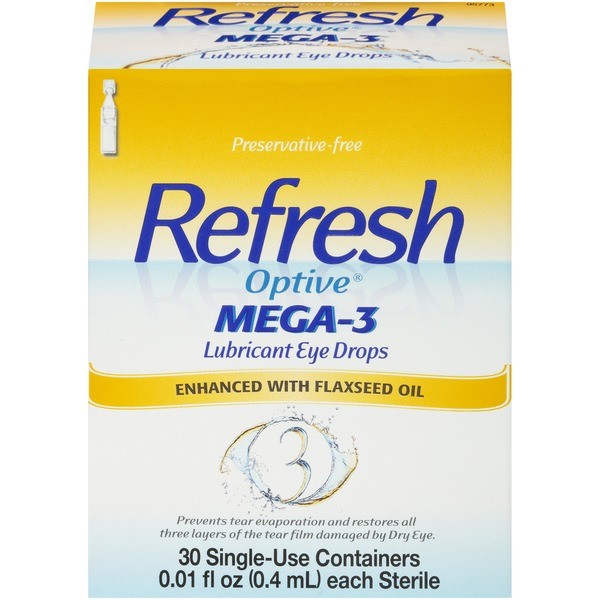
Approximately 16 million Americans have been diagnosed with dry eye, and millions more have symptoms but remained undiagnosed. Dry eye can result from inadequate tear production or poor tear quality. Symptoms include:
- Watery eyes
- Light sensitivity
- Burning /gritty eyes
- Blurred or fluctuating vision
Those over 65 and female are most likely to have symptoms. However, children are commonly diagnosed due to their significant digital device use. Once you have been diagnosed, it is important to understand dry eye is a chronic condition that will always require treatment.
Your doctor will prescribe dry eye treatment tailored to your eyes, however, there are several lifestyle changes you can make to alleviate or improve your dry eye symptoms.
1. Drink more water
Though it may seem like a no-brainer, dehydration results in dry eyes. Whole-body hydration may reduce your symptoms. For that reason, drinking alcoholic beverages often results in red, dry eyes, and studies show alcohol intake affects your tear film.
2. Discuss your medications with your eye doctor
Certain medications, including antihistamines (allergies), decongestants (cold medicines), blood pressure medications, and antidepressants reduce the amount of tears your eye produces. A discussion with your eye doctor and primary care physician may be beneficial if your dry eye symptoms worsen. Sometimes reducing the dosage or making a change to a different drug classification may improve your symptoms.
3. Use eyedrops
Both over-the-counter (OTC) drops, and prescription eye medications are available to treat dry eye. The type of drop you should use will be based on the type of dry eye you have.
There are two types of dry eye, aqueous-deficient or a meibomian (oil) gland dysfunction. Your doctor can make this diagnosis by looking at your eyes.
- Aqueous deficiency occurs because of reduced tear production from the lacrimal glands.
- Meibomian gland dysfunction is a disorder of the meibomian glands along your eyelid and the cause of over 85% of all dry eye disease.
It is not enough to go to the drug store and select an OTC artificial tear (AT) from the shelf. Based on your specific diagnosis, your doctor can best recommend what to use. For example, if your oil glands are dysfunctional, an oil-based AT is needed.
ATs that come in little vials vs. bottles are generally better for the eye because they are preservative free. Some patients may develop sensitivities or allergies to some of the preservatives in bottled ATs.
4. Maintain a healthy diet
Converting to a Mediterranean diet can improve the look of your eyes and reduce the symptoms of dry eye disease. Those with dry eye should increase their intake of fruits, vegetables, legumes, nuts, cereals, fish, and olive oil and decrease their consumption of saturated fats, meats, and dairy products.
5. Add nutraceuticals
Even with dietary changes, you may need supplementation of nutraceuticals like omega 3 found in fish oil. Three primary omega-3s are beneficial for body, brain, and ocular health:
- α-linolenic acid, (ALA)
- eicosapentaenoic acid (EPA)
- docosahexaenoic acid (DHA)
While still being studied, omega-3 therapy is standard treatment for those who suffer from dry eye. Certain brands of fish oil like Nordic Naturals are recommended by doctors. As nutraceuticals are not regulated, it’s important to make sure you are getting the daily recommended amount. Products should have either the GOED standard for purity or a third-party seal that indicates they’ve been tested by an independent lab, and they contain what the label says.
6. Protect your eyes from your environment
Environmental factors such as air, humidity, and weather conditions can impact your dry eye. Significant heat and air will dry out your eyes. When in the car, turn the vents away from your eyes. Wearing your glasses or sunglasses acts as an additional protective measure from extreme wind or air. Turning off ceiling fans or closing air vents over your bed can reduce corneal dryness overnight.
Patients that wake up with red eyes are experiencing overnight drying. Air and ceiling fans are likely culprits. Applying a sleep mask over your eyes can reduce dryness as many suffer from lagophthalmos, a condition where the eyelids do not completely close at night.
7. Quit smoking
Smoking affects the health of your eyes and your body. Smoking is a risk factor for developing lung cancer, macular degeneration, and it leads to dry eye symptoms, particularly red eyes. If you quit smoking, your dry eye and overall health will improve.
8. Reduce digital device use
The duration of digital screen use is associated with worsening dry eye symptoms in adults. Furthermore, there is a positive correlation between the amount of time spent on a smartphone in school-age children and dry eye disease.
It is best to limit your screen time and moderate your child’s time. Studies conclude you blink less frequently when using a digital device. In fact, there is a 5x decrease in the blink rate during digital device use. There is some evidence to support blinking exercises or resting your eyes may be effective at reducing dry eye symptoms.
The American Optometric Association (AOA) recommends the 20-20-20 rule to help prevent symptoms. It states that for every 20 minutes of screen use, patients should take a 20-second break and look at something 20 feet away.
9. Upgrade your contact lenses
Outdated contact lens technology could be the culprit for your dry eye. If you experience more problems with your contacts with longer wear times, it is time for a discussion with your doctor regarding their recommendations for new technology. Some lenses are known for their dry eye technology.
Many times, switching to a more breathable contact lens or a daily lens can eliminate red eyes, discomfort, or contact lens complications and infections. Other times, changing the lens cleaning solution can reduce symptoms.
10. Invest in new glasses
Even with the best technology, sometimes your eyes just need a break from your contact lenses. Research indicates contact lens wear can alter the layers of the tear film often causing contact lens intolerance. Discomfort and dryness experienced by contact lens wearers may be due to an uneven, insufficient tear film or tear evaporation.
If you have discussed new technologies and lens types with your doctor, it may be time to buy a new pair of glasses and reduce your contact lens wear time. Perhaps substitute two days of contact lens wear with glasses or remove your lenses as soon as you’re done with your workday.
Looking to find a new pair of glasses? Check out our vast selection, and make sure you add a quality anti-reflective coating to the surface for glare reduction and digital device use.
In addition to other treatment therapies, lifestyle modifications can improve your dry eye symptoms. However, it is important to remember with all of our current treatments, dry eye will never be completely cured. It is a life-long disease that can be exacerbated or alleviated with tailored care.


